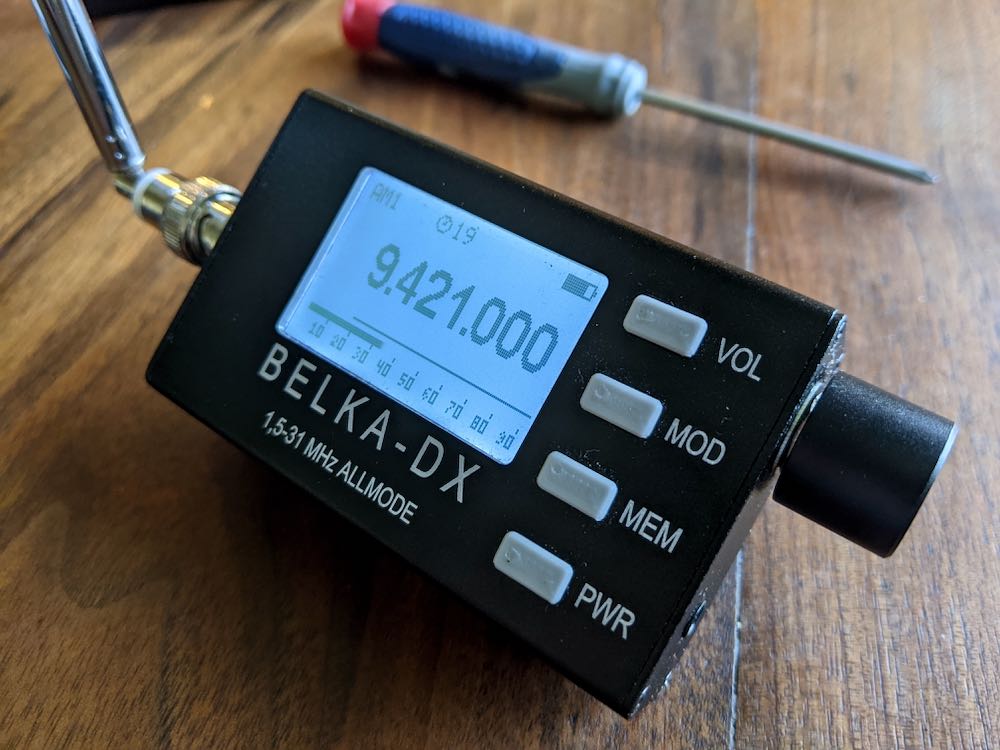 Many thanks to our friends at Radio Survivor who share this most recent episode of Today, Explained with Noel King:
Many thanks to our friends at Radio Survivor who share this most recent episode of Today, Explained with Noel King:
The BBC is bringing back shortwave radio broadcasts to counter censorship and disinformation in Russia and Ukraine. Professor D.W. Stupples explains.
This episode was produced by Victoria Chamberlin, edited by Matt Collette, engineered by Efim Shapiro, fact-checked by Laura Bullard, and hosted by Noel King.
Transcript at vox.com/todayexplained

Thanks for posting this, it was a good interview, especially for people not familiar with radio. On these pages they would be speaking to the converted but we need to remember that there is now a whole generation to which the term “radio” means an internet channel.
I hope the powers that be, remember this current conflict and are not hasty to scrap so-called outdated broadcasting systems. It’s times like these that we are reminded of their benefits and why we should keep them.
Do you think this “radio” thing will really catch on? Sounds a little dangerous…all those waves bouncing around in the atmosphere. What would happen if you accidentally breathed some in? I’m not sure if I like where this is heading, no sir.
Pure propaganda, the mainstream media lies are failing.
I was a bit disappointed in this program for the following reasons;
I don’t like organisations who won’t admit to where they are, even which country. I assume the USA because if you buy merchandise they use USPS and that the company who sends out marketing emails is in the USA.
It should be noted that in North America there is no domestic HF broadcasting, Voice of America does transmit HF signals to Cuba. RADIO MARTIhttps://docs.radiotelevisionmarti.com/es-CU/2021/05/27/7ad1ad42-8d08-454b-894d-07cdb63ed0c1.pdf which is still being used, even received in the state of South Australia. Canadian HF transmitters have been shutdown.
He is indicates good sound quality but we know that the signals bounced off the ionosphere can cause multiple reflections which can be received simultaneously giving that phasing effect which distorts the sound.
There was no mention of the BBC’s DRM or Rumania’s which is close to Russia. DRM has the advantage that it is harder to jam, does truely have perfect reception in the presence of jamming, and multipath signals. The broadcasters can use the Alternate frequency table to get the receiver to retune to the same program, making it more possible to eliminate the receiver muting from jamming by changing frequency.
“It should be noted that in North America there is no domestic HF broadcasting”
That is incorrect. WRMI and WBCQ and others target North American listeners.
“Canadian HF transmitters have been shutdown.”
That is also incorrect. CFRX on 6070 kHz and CFVP on 6030 kHz are still on the air.
You would have been correct in both instances if you had specifically mentioned public broadcasters. The examples I have given are private broadcasters.
Richard, I suggest you read this https://www.fcc.gov/general/high-frequency-broadcasting. Obviously if the transmitter is in the USA transmitting to other countries then it can be heard in the USA but the program content must not be aimed at the USA audience. There are religious broadcasters in the USA but their signals and content is aimed at an international audience otherwise they break USA law.
Whilst the FCC does not apply in Canada CFRX operates in a similar fashion “CFRX is the international shortwave relay of CFRB, a news/talk station in Toronto, Ontario. It transmits with a power of 1 kW on 6.07 MHz in the 49-meter shortwave band. CFRX signed on the air on February 11, 1937, 10 years after CFRB began. The shortwave signal was originally directed to the northwest in order to provide service towards northern Ontario and western Canada. When a new transmitter was installed in the 2000s, it was made non-directional with the intention of providing availability to Canadians travelling to or vacationing in the United States, particularly snowbirds.”
CFVP is in Calgary and is hardly going to have much effect with a 100 W transmitter when most MF and HF broadcasters transmit using far greater powers.
> WRMI and WBCQ and others target North American listeners.
Not to defend Alan, but: Only through the polite fiction of being an “international” broadcaster. The FCC regulations are pretty clear; shortwave is an international service & officially they’re not allowed to target a domestic US audience. WBCQ, for example, is listed as targeting ITU zones 3,4, & 9-12 (i.e. central and eastern Canada, Mexico, the Caribbean, and NW South America).
Interesting, WRMI has no target zones listed in the FCC database. Most others on the FCC’s authorised list do, and none of them (as far as I can see) include zones 6-8 i.e. the continental USA.
Good stuff! Thanks for posting it.
If you are an SWL, share with others!
Cheers, Jock